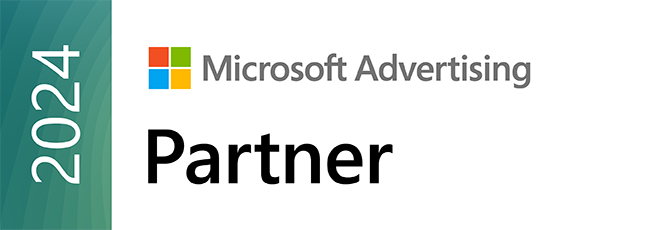Navigating Digital Marketing Landscapes: A Blueprint for Association Success and Revenue Growth

Associations today face a multifaceted challenge: generating substantial revenue amidst declining memberships and the need for diversification in revenue streams. The crucial role of digital marketing becomes evident as we delve into the strategic approaches that have led to remarkable success stories, such as Kabloom’s astonishing 11,100% ROAS and the broader industry insights provided by Caroline Forsey for Hubspot.
The Quintessential Marketing Budget
Forsey’s exploration highlights a stark reality: a well-planned marketing budget is not just a number but a strategic tool that enables success. With marketing budgets forecasted to comprise about 13.6% of a company’s total budget in 2023, it’s clear that strategic allocation aligned with industry benchmarks is crucial. Yet, many associations fall short, allocating as little as 1% to marketing, significantly below the 10-15% industry benchmark. This underinvestment is a barrier to realizing the potential for revenue generation through targeted digital marketing campaigns.
Leveraging Data to Inform Strategy
The decision to allocate a more substantial portion of the budget to marketing should be data-driven. HubSpot’s analysis of marketing spend across various industries provides a benchmark that associations can use to gauge their investment against industry standards. This approach ensures that marketing efforts are not just adequate but optimized for maximum impact and return.
Kabloom’s Case Study: A Testament to Strategic Execution
Kabloom’s success story, where a €15,000 investment yielded approximately €1,665,000 in revenue, serves as a compelling case study. This campaign not only achieved financial milestones but also significantly increased healthcare professional participation, contributing to record attendance figures. The strategic elements of Kabloom’s campaign—refined database segmentation, optimized strategic platform and channel selection, and dynamic budgeting—can serve as a blueprint for associations seeking to overcome the challenges of insufficient marketing budget allocation and the lack of a well-formulated marketing strategy.
Why a Marketing Budget is Essential
A comprehensive marketing budget is your safeguard against the unpredictable, allowing for strategic allocation of resources that ensure your marketing strategy is executable. Forsey points out that developing a marketing budget enables prioritization of projects, allocation of funds for necessary software and personnel, and calculation of ROI from marketing projects. This meticulous planning is crucial for demonstrating value and securing better budgets in the future.
Insights into a Typical Marketing Budget
According to Deloitte’s Annual CMO Survey, marketing is expected to comprise about 13.6% of a company’s total budget in 2023, marking a significant increase from previous years. This uptick, even in the face of a looming recession, signifies the critical role marketing plays in a company’s sustainability and growth. Forsey’s article further explores how investment priorities are shifting, with traditional advertising giving way to digital platforms like social media, with Facebook and TikTok seeing significant budget allocations.
Key Strategies for Marketing Success:
Leveraging Industry Benchmarks and Insights
Both Forsey’s insights and Kabloom’s case study underscore the importance of understanding your industry’s marketing spend. Aligning your budget with industry benchmarks and leveraging insights into how competitors allocate their resources can provide a strategic advantage.
Understanding Your Audience
Kabloom’s success was largely due to its refined database segmentation and targeting, which was informed by advanced data analytics. Understanding the customer journey, as Forsey suggests, and investing in audience persona outlining, as Kabloom did, are crucial steps in ensuring that marketing efforts resonate with the target audience and lead to high engagement rates.
Optimizing Channel Selection
The shift towards digital platforms, highlighted by Forsey, mirrors Kabloom’s strategic platform and channel selection, which ensured improved conversion rates. Investing in the right channels, whether social media, email campaigns, or digital advertising, can significantly enhance campaign visibility and effectiveness.
Dynamic Budgeting for Optimal ROI
Kabloom’s approach to dynamic budgeting, informed by behavioural analysis, allowed for a more cost-effective campaign, underscoring the importance of flexible and responsive budget management. This aligns with Forsey’s advice on de-prioritizing underperforming channels and reallocating resources to maximize ROI.
Adopting a Phased Approach to Budget Increases
A phased approach to increasing marketing budgets allows for strategic investment in areas with the highest potential for return. This methodical strategy ensures investments are made wisely, aligning with organizational goals and maximizing effectiveness.
Navigating Challenges in Budget Reallocation
While the path to increased marketing budgets may present challenges, including securing executive buy-in and managing financial constraints, the strategic importance of marketing investments cannot be overstated. Establishing clear KPIs and leveraging analytics are essential for demonstrating ROI and building stakeholder confidence.
Overcoming Digital Marketing Challenges for Associations
Associations grappling with these challenges can draw on the insights from Kabloom’s approach and Forsey’s industry analysis. Understanding the target audience and leveraging digital marketing strategies are key to overcoming obstacles such as insufficient budget allocation and staying relevant in a competitive landscape.
- Strategic Budget Allocation: It’s imperative for associations to move beyond the minimal marketing investment, recognizing the potential of digital marketing to generate significant ROAS. This involves allocating budgets strategically across key milestones, ensuring that each dollar spent contributes to reaching new audiences and driving registrations.
- Audience Understanding and Engagement: Following Kabloom’s example, associations should refine their audience segmentation and targeting, utilizing advanced data analytics to enhance engagement. This tailored approach ensures that marketing messages resonate with the intended audience, thereby increasing the likelihood of attracting the right attendees.
- Optimized Channel Selection and Multi-Channel Marketing: As Forsey suggests, prioritizing digital platforms is crucial. Associations should select channels based on where their target audience is most active, employing a multi-channel marketing strategy that includes SEO, PPC, and social media marketing to maximize reach and engagement.
- Data-Driven Optimization: Continuous optimization based on data insights ensures that marketing efforts are constantly refined for better performance. This mirrors Kabloom’s real-time monitoring and analysis strategy, enabling associations to make informed decisions and adjust strategies as needed.
- Comprehensive Digital Marketing Strategy: Ultimately, developing a comprehensive digital strategy that aligns with association goals across various stakeholders is key to long-term growth. By leveraging marketing data, associations can stay ahead of industry trends and ensure sustainable success.
The Bottom Line:
The integration of strategic budgeting insights from Forsey, the empirical success demonstrated by Kabloom, and the targeted strategies for associations form a cohesive blueprint for digital marketing excellence. By embracing these strategies, associations can navigate the challenges of today’s competitive landscape, effectively leveraging digital marketing to drive revenue growth, increase attendee engagement, and secure a prosperous future.
FAQ
- How can associations effectively measure the ROI of their digital marketing campaigns?
To effectively measure ROI, associations should set clear, specific goals and use tracking tools like Google Analytics. Key metrics include conversion rates, click-through rates, and engagement levels. Regularly comparing these metrics against campaign goals helps in understanding performance. Additionally, using A/B testing can refine strategies and improve ROI over time. - What are the key components of a successful marketing budget for associations?
A successful marketing budget includes allocations for paid advertising, content creation, social media, SEO, and data analytics. Associations should prioritize spending on areas with the highest potential for engagement and conversion. Regularly reviewing and adjusting the budget based on performance metrics ensures optimal allocation of resources. - How can associations use data analytics to improve their marketing strategies?
Data analytics can be thoroughly used to gain insights into member behavior and preferences. Tools like Google Analytics and CRM systems help track user interactions, identify trends, and segment audiences. This information allows for more targeted marketing efforts, personalized content, and improved engagement, leading to more effective and efficient campaigns. - What are some best practices for optimizing digital channels for associations?
Best practices include understanding the target audience, selecting appropriate channels (such as social media, email, and PPC), and creating tailored content. Regularly analyzing performance data helps in adjusting strategies for better results. Additionally, integrating a multi-channel approach ensures broader reach and consistent messaging across platforms. How can associations overcome budget constraints while trying to implement an effective marketing strategy?
Budget constraints can be overcome by prioritizing high-impact, low-cost strategies such as SEO, content marketing, and social media engagement. Leveraging partnerships and collaborations can also extend reach without significant spending. Using data to continually refine and focus efforts ensures that every dollar spent contributes effectively to achieving marketing goals.
A thought-leadership piece written by the CEO of Kabloom, Richard Torriani.
Updated on May 31st, 2024

See how we rank as a Top Digital Marketing Agency on DesignRush.






